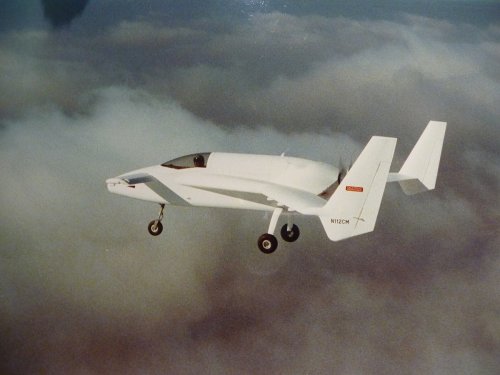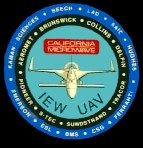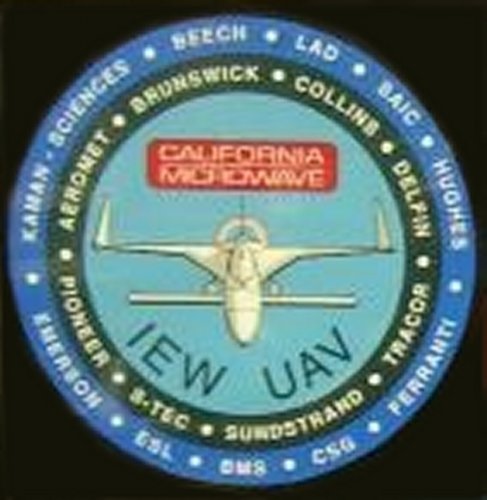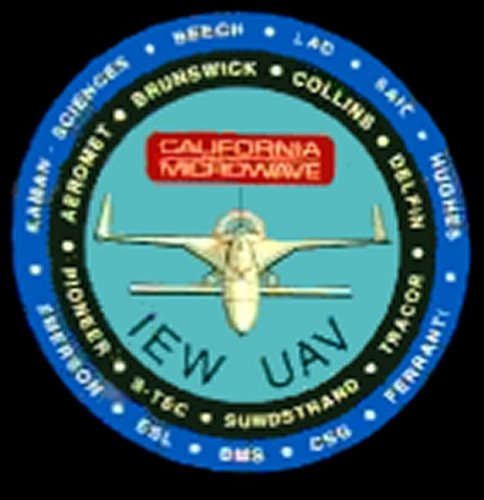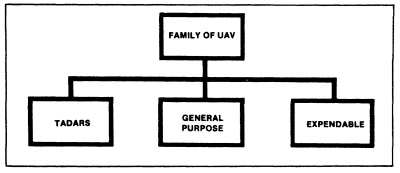- Joined
- 25 June 2009
- Messages
- 14,759
- Reaction score
- 6,165
It is not always that we get a peak at a totally unknown prototype. This is one such moment. I believe there is no reason to withhold the following anymore, so enjoy...
The California Microwave CM-46 prototype [N112CM] was the final development of the CM-44 (Scaled Composites Model 144) program, the result of a Martin Hollmann redesign. Contrary to the CM-44, the CM-46 was government funded. Unfortunately, as it was developed from a navigator's, not a pilot's point of view, the CM-46 was ugly, couldn't fly properly and never went operational. The fact that Burt Rutan and Scaled Composites were no longer involved in this project at all probably accounts for the design's flaws and poor performance.
No pictures or data of this rare aircraft were ever released... until today. The photo below is most probably the only decent picture of it that will ever be available, as the program's assets were all destroyed on cancellation of the program (except for this sole photo, salvaged by someone involved in the program and given to me as a gift along with the specs sheet, photos of the CM-44 program, and video tapes of both flight programs which I unfortunately haven't got the technology to transfer to digital right now).
For more information on the CM-44 program, check out STARGAZER, my website on Rutan designs:
http://stargazer2006.online.fr/menu.htm
Click on "THE VARIEZE/LONG-EZ LINE" >> Model 144.
The California Microwave CM-46 prototype [N112CM] was the final development of the CM-44 (Scaled Composites Model 144) program, the result of a Martin Hollmann redesign. Contrary to the CM-44, the CM-46 was government funded. Unfortunately, as it was developed from a navigator's, not a pilot's point of view, the CM-46 was ugly, couldn't fly properly and never went operational. The fact that Burt Rutan and Scaled Composites were no longer involved in this project at all probably accounts for the design's flaws and poor performance.
No pictures or data of this rare aircraft were ever released... until today. The photo below is most probably the only decent picture of it that will ever be available, as the program's assets were all destroyed on cancellation of the program (except for this sole photo, salvaged by someone involved in the program and given to me as a gift along with the specs sheet, photos of the CM-44 program, and video tapes of both flight programs which I unfortunately haven't got the technology to transfer to digital right now).
SPECIFICATIONS FOR THE MODEL CM-46 AIRCRAFT:
- Engine: Lycoming TIO-360-CIA6D 210 BHP fuel injected pusher, turbo-charged dynafocal mount, one or two 100 amp alternators 28 volt system
- Propeller: MT 3-blade, constant speed, fiberglass covered wooden blades with stainless leading edges
- Exhaust system: Downward facing pipe, exhaust from the turbo-charger
- Cargo: 45 cubic feet cargo area with down-and-forward looking clear view. Maximum allowable weight for pilot, payload and fuel is 1,140 lbs
- Performance:
Takeoff and landing distance 1,400 feet @ 2,700 lbs
Sea level climb > 900 ft/min @ 2,700 lbs GW
Max speed > 135 KTAS @ sea level; 155 KTAS @ 20,000 ft
Loiter speed 85 knots
Altitude capability: 23,000 ft
Example:
Empty weight 2,060 lbs
Pilot weight 200
Fuel weight 400
Payload weight 540 lbs
----------------------
Total weight 3200 lbs
This will give 5 hours flying time plus 30 minutes reserve
- Lifting surface area: 177 sq ft
- Wing span: 32 ft
- Length: 19.5 ft (max, wings off)
- Gross weight: 3,200 lbs Max (Takeoff), 3,000 lbs (Landing)
- Empty weight: 2,060 lbs Basic IFR
- Landing gear: Fixed composite main with wheel pants, retractable, steerable nose gear with oleo strut. Landing gear is operated hydraulically with a mechanical backup.
- Canard: Removable, with manual pitch control elevators
- Main wing: Detachable wings with 90 inch maximum center section attached to the fuselage, manual roll control ailerons, hard points for 14 inch ejector rack (one on each wing)
- Winglets: Fixed, with 87 degree inboard cant (to waterline), manual yaw control rudders
- Fuel System: Gravity filled, with left and right tanks in wing strake, gravity flow to a single header tank of 4 gallons, mechanical pump and electric boost. Provision for electric fuel flow measurement, capable of being downlinked. 110 gallon capacity.
For more information on the CM-44 program, check out STARGAZER, my website on Rutan designs:
http://stargazer2006.online.fr/menu.htm
Click on "THE VARIEZE/LONG-EZ LINE" >> Model 144.

